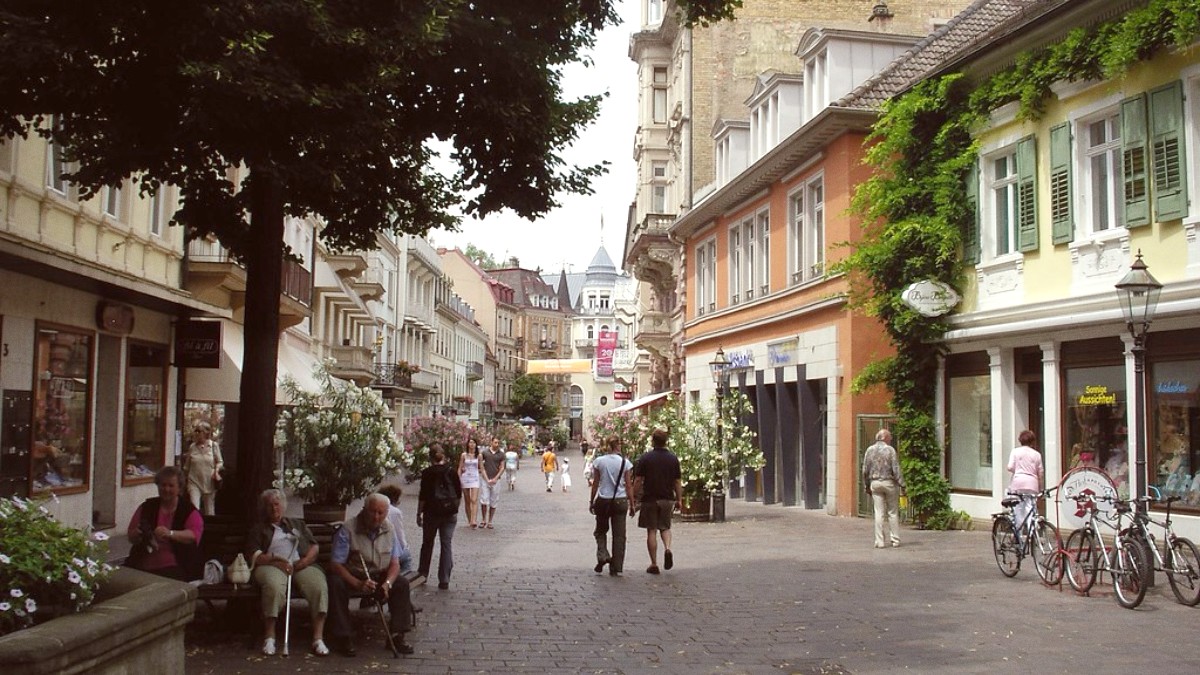
Baden Wurttemberg, Germany
Travelers arrive in Baden-Baden for relaxation, rejuvenation, and exploration. The city’s reputation as a spa town stands firm, with its mineral-rich thermal waters bringing therapeutic benefits for generations. Beyond the baths, Baden-Baden exhibits a rich cultural calendar, featuring international music and arts events at its grand Festspielhaus. Walk through the picturesque Lichtentaler Allee, a historic park avenue, or try your luck at the legendary Casino, known for its opulent interiors. The experience here moves at a relaxed pace, inviting one to savor each moment.
Baden-Baden features more than just a destination; it carries an atmosphere. The city’s design prompts leisurely walks and quiet contemplation. Its compact size means many attractions lie within walking distance, making way for spontaneous exploration. From the charming Old Town with its narrow streets and boutiques to the panoramic views from Merkur Mountain, the city unfolds with grace. This setting fosters personal renewal, where the beauty of the surroundings assists in finding calm.
Lush parks and gardens invite quiet contemplation, while historical buildings tell stories of past eras. The blend of nature and human artistry makes an environment that feels both luxurious and welcoming. Whether seeking therapeutic waters, cultural enrichment, or simply a peaceful setting for a break, Baden-Baden delivers. Its distinct character leaves a memorable escape from the busy routines of daily life.
Baden-Baden occupies a distinct geographical position in southwestern Germany. This makes it a gateway to two diverse and appealing regions: the Black Forest and the Rhine Valley. Positioned on the northwestern edge of the famous Black Forest (Schwarzwald), the city gains from the natural beauty and recreational opportunities of this vast, forested mountain range. To its west, the landscape flattens into the expansive Rhine Plain, a fertile valley carved by the Rhine River, which forms the border with France. This dual geographic identity shapes the city’s climate, activities, and overall character.
The Black Forest, a region of rolling hills, dense pine and fir forests, and deep valleys, forms Baden-Baden's immediate backdrop. The city itself nestles in the Oos Valley, with the Oos River flowing gently through its heart. Surrounding hills, like the Merkur Mountain to the east, bring elevated viewpoints and ready access to extensive hiking and cycling trails. The mountainous terrain presents a varied climate, with cooler temperatures and more precipitation in higher elevations, contrasting with the milder conditions in the valley. The Rhine Valley, to Baden-Baden’s west, represents a different geographical sphere. This fertile plain stands famous for its agricultural bounty, specifically vineyards. The Baden wine region, one of Germany's warmest wine-growing areas, stretches across this plain. This proximity makes Baden-Baden a base for exploring picturesque wine villages and enjoying local vintages.
Springs come from rainwater seeping through granite bedrock, heated by geothermal activity.
City sits in the Oos Valley with the Oos River flowing through.
Eastern backdrop, offering high viewpoints and trail access.
Higher elevations have cooler, wetter conditions compared to the milder valley.
Proximity to the French border (Alsace) influences local culture and cuisine.
The Black Forest is known for its dense canopy, making an unique microclimate in many areas. Pack layers for hiking, as temperatures can drop, even on sunny days, once deep within the forest. While higher parts of the Black Forest experience colder winters and more snow, Baden-Baden generally has milder conditions. The Oos River, though small, lends to the city’s serene ambiance, notably along the Lichtentaler Allee. This natural position makes an environment ideal for both relaxation and outdoor exploration.
View of Black Forest near Baden-Baden, demonstrating the region's dense pine and fir forests.
Oos River flowing through Baden-Baden, peaceful ambiance along the Lichtentaler Allee.
The geography also frames the types of outdoor recreation available. The Black Forest contains dense networks of well-marked trails for hiking, from gentle strolls to challenging climbs. Cyclists find both paved routes through the Rhine Valley and mountain biking trails in the forest. Winter brings options for cross-country skiing or snowshoeing in the higher elevations. The varied terrain ensures outdoor enthusiasts of all levels find suitable activities.
Baden-Baden’s history stretches back over two millennia, deeply intertwined with the therapeutic qualities of its thermal springs. The Romans, recognizing the water’s healing qualities, established the first settlement and baths here around 80 AD, naming it "Aquae Aureliae" (The Waters of Aurelius). Evidence of this Roman past still appears today in the archaeological ruins beneath the modern Friedrichsbad. These early beginnings laid the foundation for Baden-Baden’s lasting identity as a spa town.
After the Roman era, the town’s influence lessened somewhat, but its springs kept their reputation. In the Middle Ages, the Margraves of Baden selected this location for their residence, building the Hohenbaden Castle (Altes Schloss) in the 11th century. This marked a period of local political prominence. The castle, now a ruin with sweeping views, mirrors the region's medieval power. The Stiftskirche, the collegiate church, also dates from this period, displaying the architectural and religious developments of the time.
First settlement as "Aquae Aureliae" around 80 AD, recognizing healing thermal waters.
19th-century transformation into "Summer Capital of Europe," drawing aristocracy and cultural figures.
Construction of Kurhaus, Casino, and luxurious hotels marking a period of grandeur.
Remarkable figures like Queen Victoria, Emperor Wilhelm I, and Russian novelist Fyodor Dostoevsky visited or resided here, leaving their mark on the city’s lore. Dostoevsky reportedly lost much of his fortune at the Baden-Baden Casino, an experience thought to inspire his novel "The Gambler." This era solidified Baden-Baden’s reputation as a playground for the elite, a place where health, wealth, and entertainment converged. The city stood as a symbol of European high society and leisure.
Caracalla Therme and Friedrichsbad Roman-Irish Bath for rejuvenation.
Festspielhaus, Kurhaus & Casino, Museum Frieder Burda, Staatliche Kunsthalle.
Lichtentaler Allee, Merkur Mountain, Black Forest for walks and views.
A relaxing pace with many opportunities for personal enrichment.
The city combines historical depth with modern comfort.
A well-rounded and peaceful travel experience in a distinguished German spa town.